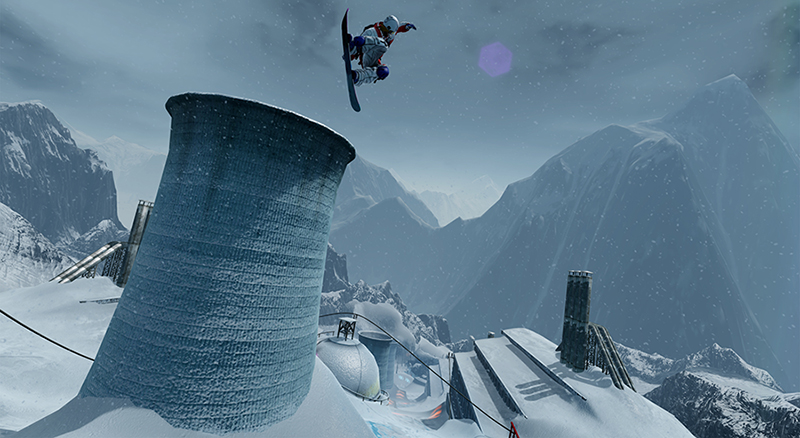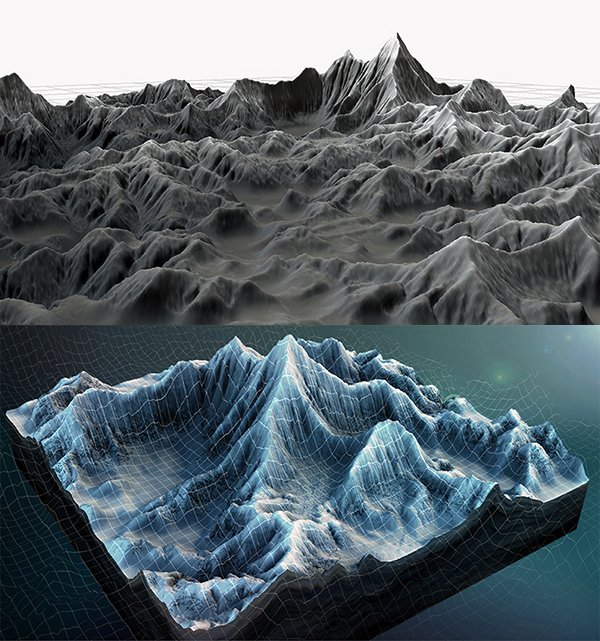
Satellite Maps Deliver More Realistic Gaming
NASA Technology
In June 2009, NASA launched Terra, the flagship of NASA’s Earth Observing System, which studies a sweeping set of the planet’s characteristics. Included in the satellite is the Advanced Spaceborne Thermal Emission and Reflection Radiometer (ASTER). ASTER is a cooperative effort between NASA and Japan’s Ministry of Economy Trade and Industry, with the collaboration of scientific and industry organizations in both countries. The instrument provides the next generation in remote sensing imaging capabilities when compared to the older Landsat Thematic Mapper and Japan’s JERS-1 OPS scanner.
One of the goals of the collaboration has been to make ASTER data publicly available, says Michael Abrams, a science team leader at the Jet Propulsion Laboratory. “The ASTER Global Digital Elevation Map is the most complete global topographic data set freely available to the public. In the two and a half years since we released it, we have distributed millions of 1 by 1 degree tiles to users all over the world.”
Technology Transfer
One prominent user of ASTER’s data is Redwood City, California-based Electronic Arts (EA) Inc. The company is one of the largest video game companies in the world, generating nearly $4 billion in revenue a year.
In 2009 the company started production on Super Snowcross (SSX), the latest in its series of snowboarding games. Todd Batty, producer and creative director of SSX, says that “one of the development team’s first tasks was to establish the physical environment of the game’s virtual world, which meant building mountains and tracks. The series has always been big, crazy, and over the top, and we wanted to deliver a massive amount of content by creating entire landscapes.”
Rendering a full mountain from scratch is a time-consuming process that can require an army of programmers, artists, and level designers. To streamline the process, the team figured out how to generate mountain terrains algorithmically using an in-house software tool called Mountain Man.
While the mountains created by this process were close to what the team wanted, Batty says they still lacked some essential qualities. “As we researched the mountains of Earth and compared them to the ones we were building, ours just didn’t have the same character, interesting features, or, obviously, the great history that the famous mountains of the world have.”
One day a technical lead on the project called Batty into his office, where he had been experimenting with mountain-building. The programmer said he had “found something really cool online”— ASTER’s data—which he had downloaded and converted into a format Mountain Man could use. He asked Batty to name any mountain on Earth, and within 30 seconds the two were looking at and manipulating a 3D replication of it.
While the data wasn’t fine-grained enough to replace EA’s existing tools outright, it proved the perfect complement to Mountain Man. “That had been the weakest link in the chain,” says Batty. “When we found that we could start with what was essentially a real mountain, and then let Mountain Man and our artists build on top of that, it proved to be the last piece of the puzzle.”
Benefits
The millions of people who have played SSX since its release in early 2012 are experiencing first-hand the benefits that the ASTER data infused into EA’s product. No previous title in the series included real mountains, but the 2012 game features 28 real-world mountains—each with multiple paths of descent—from nine different ranges. And thanks to the completeness of ASTER’s data, the background scenery throughout SSX also features accurate renderings of neighboring mountains and terrain.
While the overall look and feel of the mountains is realistic, EA added all of the flair, obstacles, and power-ups one typically finds in an action game, as well as iconic landmarks such as the Great Wall of China to add interest. Says Batty, “Players experience the best of both worlds: everything has an air of authenticity because the base of the data is straight from satellites, but they also get larger than life gameplay.”
The team’s use of the data has caught people’s attention. “We’ve had a lot of interest around the company in how we acquired the ASTER data, manipulated it, and combined it with our tools,” Batty notes. “And I know for sure that, if we end up doing another game in the series, we will use the data again, because this was an awesome experience for us.”

Designers were able to incorporate ASTER data directly into their in-house software tools (top) and render it into usable terrain for the game (bottom).

Full-featured courses were built on top of the data, including landmarks like an abandoned nuclear power plant in Siberia.













